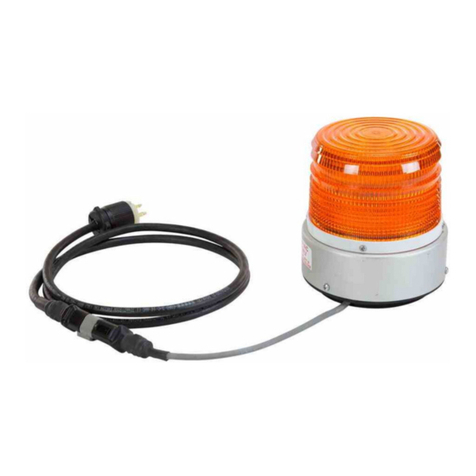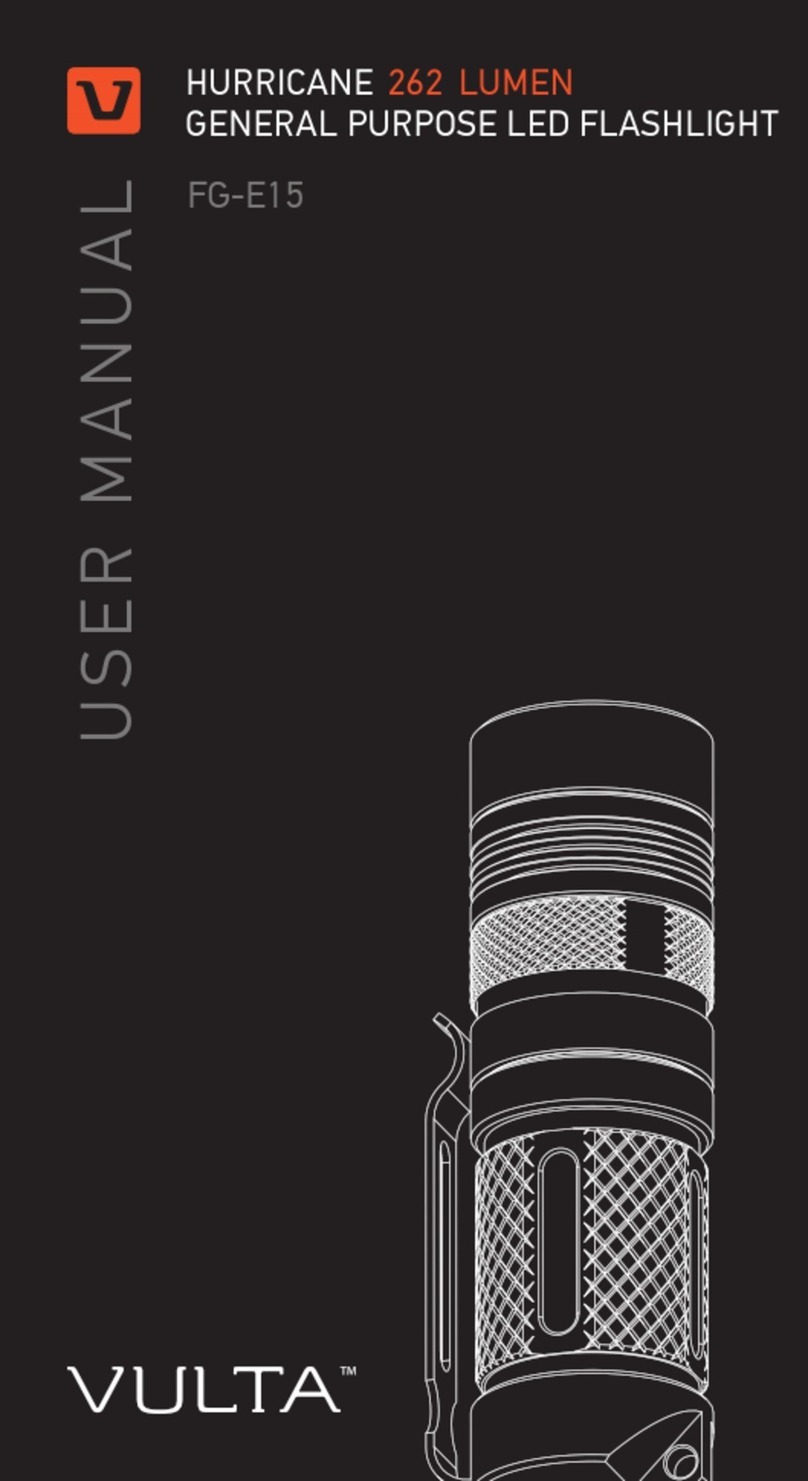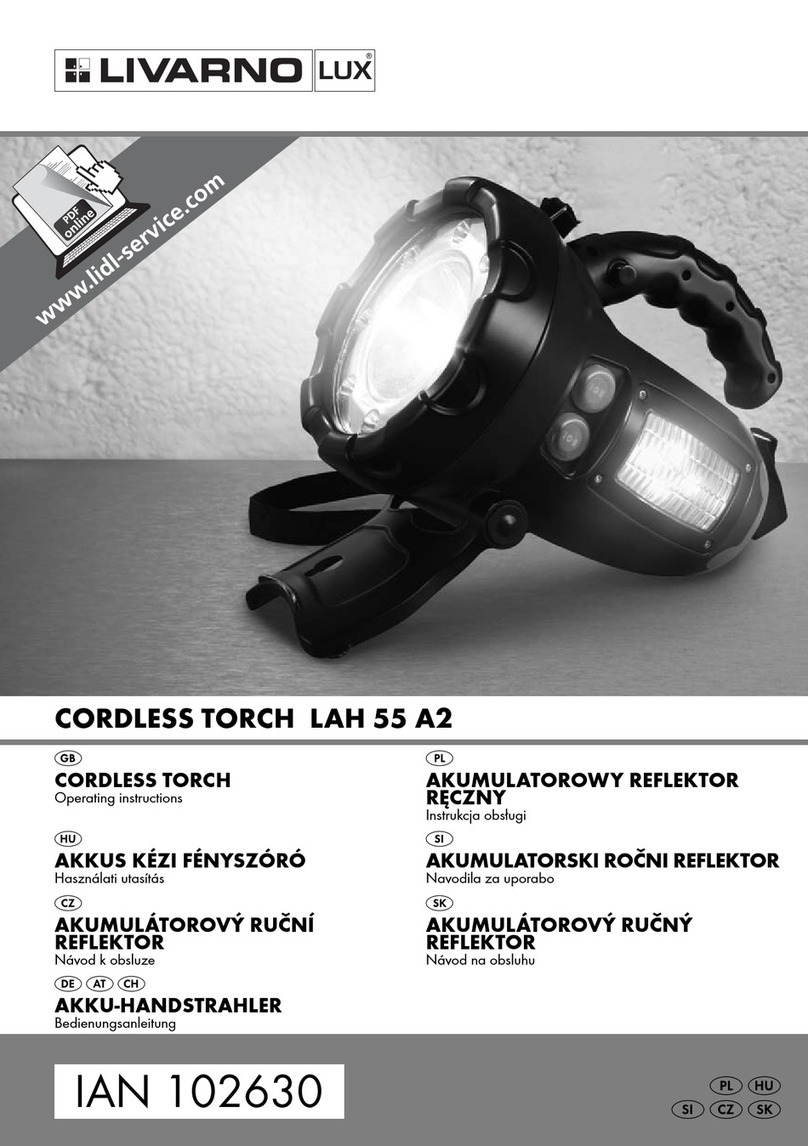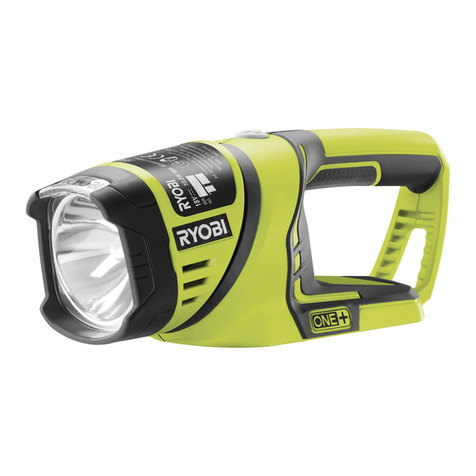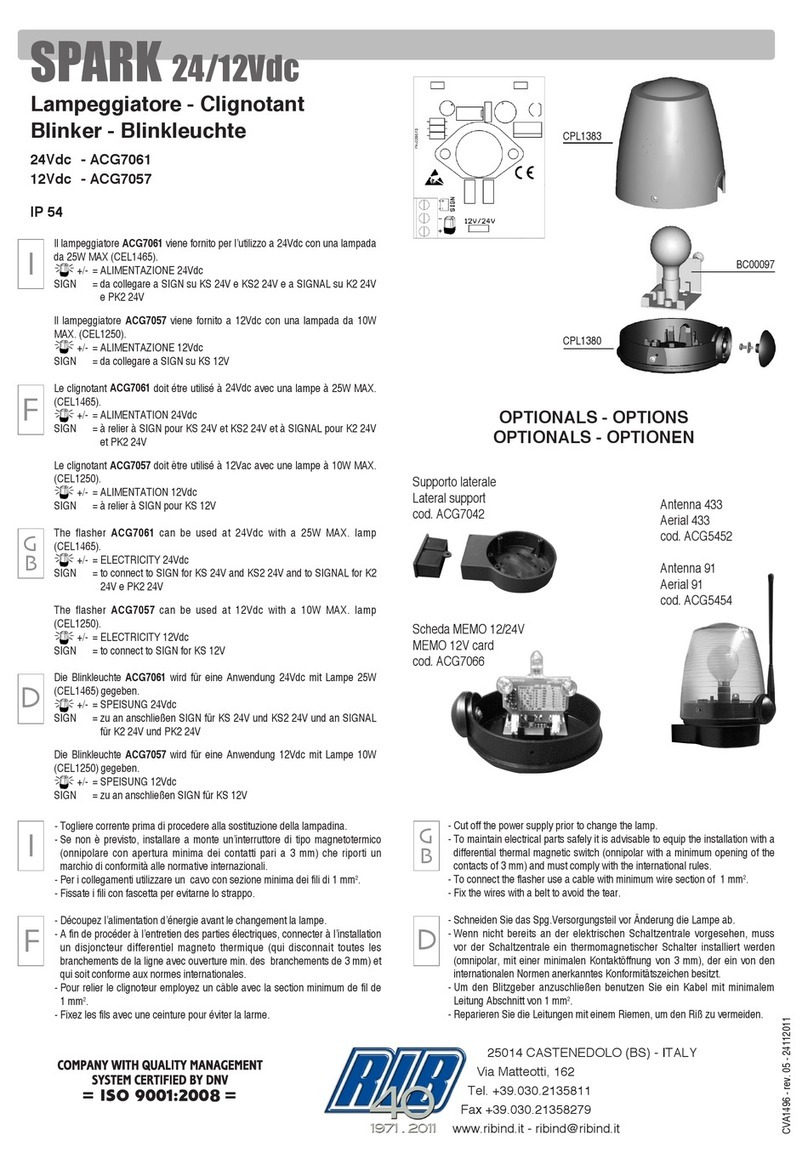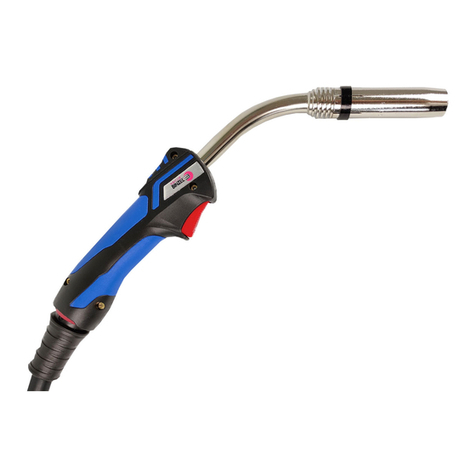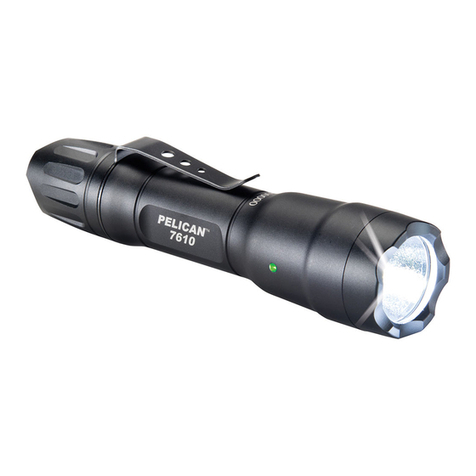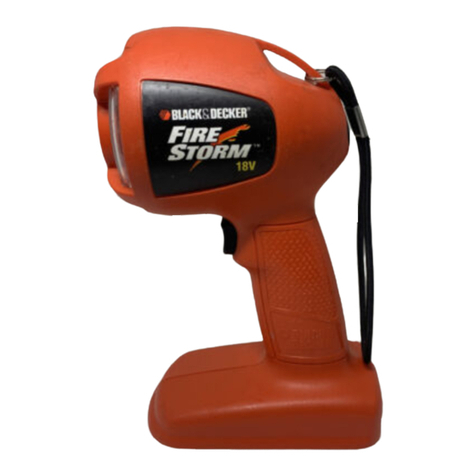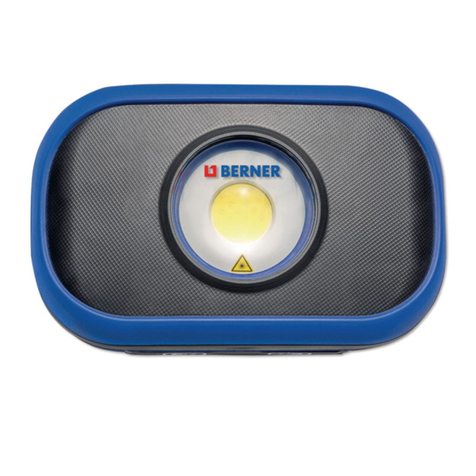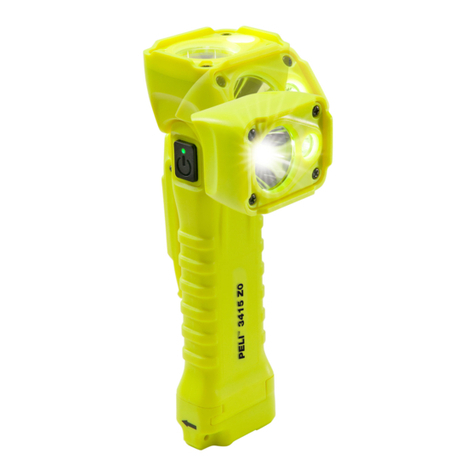
Page 5 | 16
d. Plug in the sync cord and connect to camera shutter at ‘X’ synchronization. Alternatively a
wireless transmitter can be used to trigger.
5.0 Operating the Flash
a. The power switch J(Fig.5) on the rear panel controls the power to both the flash and the
modeling lamp. The LED Display A(Fig.5) will light when power is on.
b. When the unit has charged to the level set by the Flash Power control H(Fig.5) the green LED
light C(Fig.5) will be lit. The Flash is now ready to fire.
c. Pressing the control Hup and down (Fig.5) will adjust the flash from full to 1/32.
d. When reducing the power level, the LED display A (Fig. 5) will blink until the power level is
adjusted to the set value.
e. For testing the flash, press button D(Fig.5).
6.0 Operating the Modeling Lamp
a. To activate the modeling lamp ‘ON’, press the MODEL button I(Fig.5). Each press of the switch will
increase the power of the modeling lamp by a full stop from 1to 6on the LED display. The output
of the modeling lamp will show on the LED display for a few seconds and then will display the flash
output.
b. Pressing the MODEL button I (Fig.5) until you get 00 will disable the modeling lamp.
c. Pressing the AUDIO button B(Fig.5) will disable the audio ready beeper, and allow the modeling
lamp to momentarily switch off when the flash is fired.
7.0 Triggering the Flash
7.1 TEST Button
The simplest way to trigger the flash is to press the TEST button D (Fig.5). This is also useful when you
need to discharge the power built up in the flash unit, for example when replacing the flash tube (see
section 10-1).
7.2 Sync Connection
The sync jack F (Fig.5) on the flash may be used for direct connection to a camera set to "X" synchronization.
A radio slave receiver may also be plugged into the socket.
7.3 Photocell
a. The Slave photocell G (Fig.5) is located behind the red transparent cover on the top and at the
back of the unit. It enables the unit to be triggered by another flash or an IR remote trigger. Enable
or disable this feature by pressing MODEL button E (Fig. 5). When enabled, the associated green
LED light will be ON.
b. The numbers of pre-flashes are variable from one to seven. In automatic pre-flash mode, the unit
matches the pre-flash count with the camera.
c. Press and hold the SLAVE button for 4 seconds to enter the pre-flashes setup page “Cx ” (Fig. 9A
& 9B).
d. Press UP/DOWN button (Fig. 10A 10B) to adjust from pre-flashes from 1 to 7, or select 0 for
automatic mode.



